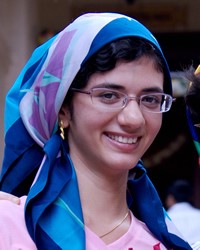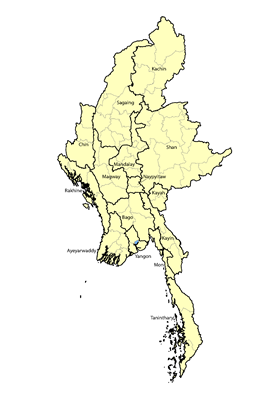The Parsee are an unreached ethno-religious group who date back to Old Testament times, when they played prominent roles in the kingdoms of Darius, Cyrus, and Xerxes. The forefathers of the Parsee in Myanmar today came from Gujarat in western India, where a sizeable community still lives. The 1931 census of Burma returned 498 "Parsi" people, while an additional 697 “Persians” were listed in the census. This mixing of Persian people resulted in the Parsee being mislabelled “Burmese Muslims.” They are not Muslims, however, and were almost eradicated from history during the Arab conquests of the seventh century because they refused to submit to Islam. Today, Parsee people in Myanmar are usually viewed as Indian migrants.
Location: With a population of approximately 1,700 in Myanmar, the Parsee (known locally as “Pathi”) people reside in Yangon (formerly Rangoon), the largest city and until 2006 the capital of Myanmar. Most Parsee people live in the North Okkalapa Township in the East Yangon District. Parsee communities total about 165,000 people globally in at least a dozen countries, with India, Iran, and the United States containing the largest populations.
Language: Originally the Parsee people lived in Fars Province in present-day Iran, which lent its name to the national language of Farsi. In the tenth century a group migrated to Gujarat in India, and from there a small number of families relocated to Myanmar in the mid-19th century. As a result, many Parsees in Myanmar could speak and read Gujarati in the past, but today Burmese has gained ascendancy, as the Parsee chose to blend in with their adopted society.
Although the Parsee claim a history dating back to before 2500 BC, they first arrived in Myanmar from India in the 1850s. For decades their population in Yangon remained low, but the community grew after Zoroastrian prayer halls were built and leading families opened businesses. A blow occurred during the Second World War when the main Zoroastrian temple was destroyed by a Japanese bombing raid. It was rebuilt, only to be demolished again in the 1960s by the Burmese military. A Parsee cemetery operated from 1858 until a new regime seized the land in 1995. The dejected Parsee community collected 167 tombstones and relocated the cemetery to its present location outside the city.
The Parsees in India became very wealthy during the British colonial period, with many working as bankers, traders, and moneylenders. The Parsee have been described as “tightly-knit closed groups that view themselves as superior to all other religious groups and races. Women who marry outside their people group are no longer considered Parsee. One must be born a Parsee and must participate in the blood covenant ritual, when the child is bathed and then offered bull's urine, considered to be the blood of their god, thus establishing a covenant allowing their soul to be one with their god.”
The religion of the Parsee people is Zoroastrianism, which centers around fire as its supreme deity. All religious rituals are performed with fire, which “burns continuously in homes, and the temple fire is forbidden to burn out. Fire worship may include a devotee falling prostrate before the flames. They hold to the belief in a wise Creator God….and believe they go to heaven by reading or reciting their Zoroastrian scriptures.”
Christian influence among this fascinating group may date back to the very beginning of the Gospel era, with some of the magi who came to worship at Jesus' birth believed to have been Parsees. Because of their closed communities and strong adherence to their unique religion, the Parsee are extremely difficult to reach, and there are no known Christians among them in Myanmar. Globally, very few Parsee people have ever placed their trust in Jesus Christ, while some individuals who have done so have proved to be dangerously legalistic.
Scripture Prayers for the Parsee in Myanmar (Burma).
| Profile Source: Asia Harvest |












